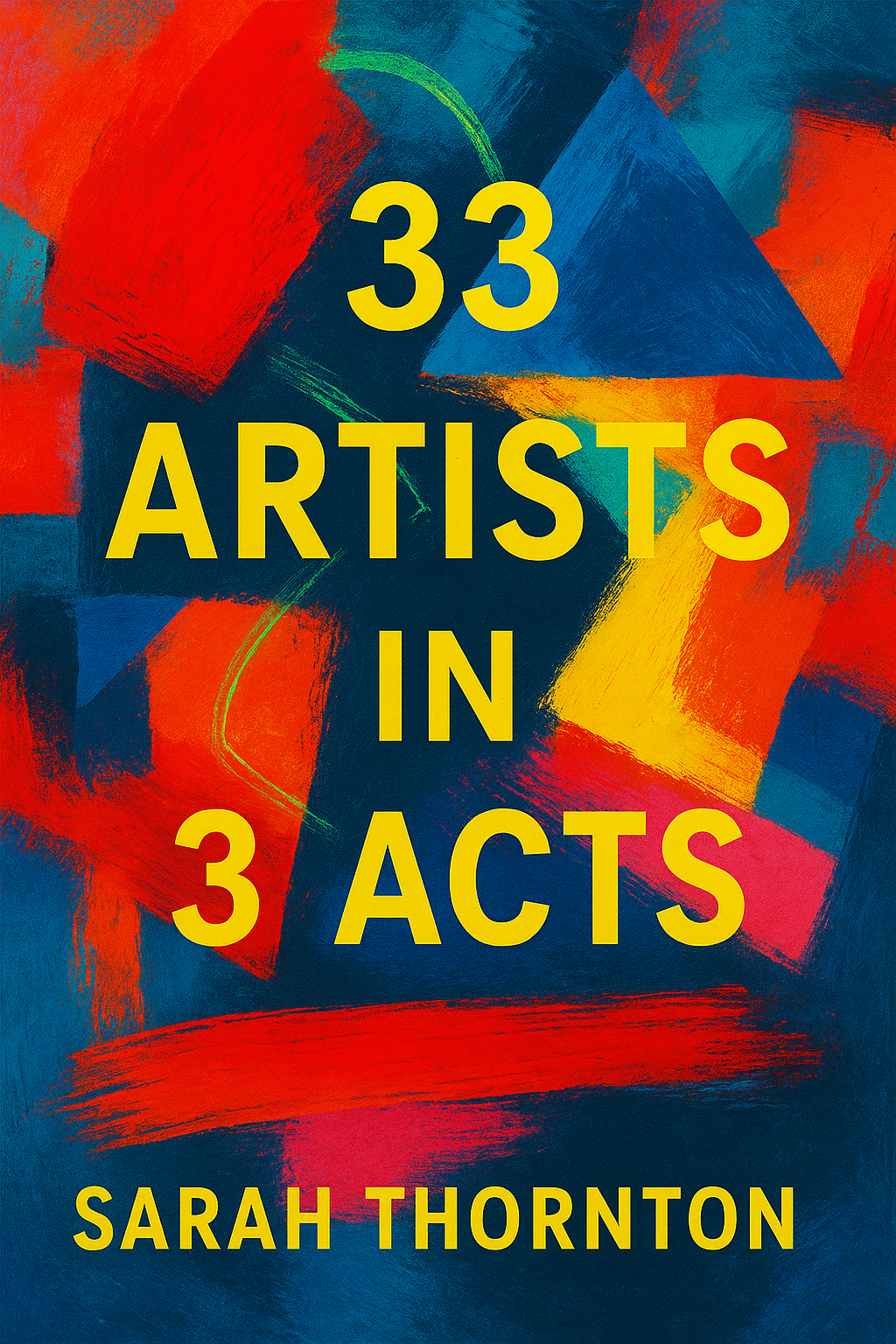Sarah Thornton – 33 Artists in 3 Acts
Sarah Thornton’s 33 Artists in 3 Acts offers a compelling, nuanced exploration of what it means to be an artist today. Through intimate interviews and vivid portraits, Thornton dismantles myths of genius and authenticity, revealing the complex, often contradictory realities behind contemporary creative lives. A must-read for anyone seeking deeper insight into the art world’s evolving landscape.
BOOK ON MY TABLE
Charlotte Madeleine CASTELLI
7/25/20253 min read


What does it truly mean to be an artist today? Is it an act of faith or a sophisticated form of entrepreneurship? Is it proximity to philosophical inquiry, or merely a branch of the entertainment industry? This fertile, unresolved tension, deliberately left open, permeates every page of 33 Artists in 3 Acts, the richly layered yet accessible work by Canadian sociologist and author Sarah Thornton.
Join me on this vibrant journey into the fascinating lives of artists—no exclusive access required. Let’s explore together the colorful stories behind the canvas and beyond!
Thornton does not simply interrogate the art system; she traverses it as a living, shifting field, full of contradictions and myths. 33 Artists in 3 Acts unfolds like a Pirandellian drama: three acts—Politics, Kinship, and Craft—marked by scenes that portray intimate encounters, narrative overlaps, and sharp contrasts. The result is neither an academic investigation nor a “who’s who” catalog of the contemporary art world, but a powerful anthropological narrative oscillating between inquiry and coming-of-age storytelling.
Embedded within the book’s structure is a subtle yet radical epistemological ambition: to dismantle clichés of genius and marginality, instead offering a kaleidoscope of artistic identities defined by paradox. The thirty-three artists featured—joined by two curators, a critic, and several family members—do not provide definitive answers to Thornton’s haunting question (“What is an artist?”). Rather, they circle around it, retreat at times, speak in allusions, and often reveal themselves through contradiction.
At its best, Thornton steps back, allowing voices to emerge in their unvarnished humanity: Ai Weiwei, witty and confrontational; Andrea Fraser, intense and vulnerable; Maurizio Cattelan, brilliant yet precarious; Damien Hirst, strategically unsettling. It is precisely when Thornton relinquishes control that her prose becomes most incisive—not a glossy report, but a theatre of the real where scenes overlay like memories.
Thornton never claims objectivity, nor does she pretend to it. 33 Artists in 3 Acts is partial, intentionally fluid, and dense with minute details—the food artists eat, their clothing, their working spaces—that construct a portrait of the artist as a figure suspended between myth and craft. Beatriz Milhazes, for example, defines herself “like a bank clerk”: showing up five days a week, attending to detail, avoiding mistakes. Here, Thornton reveals herself not as an art elite insider, but as an acute narrator of the constructed, often performed, realities of creative life.
Each act thematizes a different dimension of identity construction: Politics juxtaposes Jeff Koons (the “cooked”) and Ai Weiwei (the “raw,” in a semi-private nod to Lévi-Strauss); Kinship probes not biological ties but the informal networks and relational mechanisms that determine belonging and visibility; Craft delves into the intimacy of practice, between obsession and strategy, discipline and compulsion.
Yet the book’s most authentic strength lies not in taxonomy but in the disintegration of the very concept of “authenticity.” Francesco Bonami’s provocative classification—real/fake, good/bad—is the starting point from which Thornton shows how any attempt to cage artistic identity results in constant slippage. Artists’ voices, often in contradiction, destabilize any absolutist premise. Carefully crafted theoretical statements crumble before the lived quotidian of studios, collegial exchanges, and hidden vulnerabilities behind success.
Contemporary art, in this book, emerges as a choral language inhabited by overlapping subjectivities who constantly observe one another. Thornton captures this horizontal surveillance, this coexistence of competition and complicity, with the finesse of someone who understands that an artist’s “value” is often built in relation to an ecosystem of affiliations, recognitions, and mutual legitimations. The artist is not only a producer of works but, more importantly, an architect of presence.
33 Artists in 3 Acts is, ultimately, an anti-manual: it evades easy answers, resists dogma, and slips into the white noise of the art world to reveal its human texture. It is not a book for seeking certainties but for dwelling in the ambiguity of what it means to be an artist in the twenty-first century. And precisely for this reason, Charlotte places it on her table this week: reading Thornton is an act of embracing art not as a given, but as an ever-shifting field where identity—as much as creation—is always a work in progress.
© Charlotte Madeleine Castelli | All rights reserved
